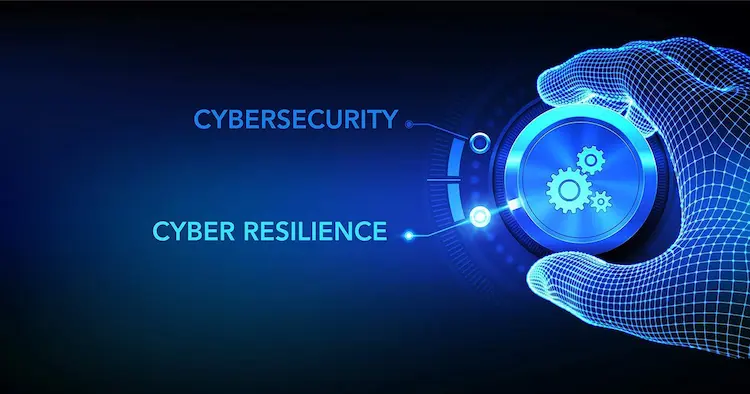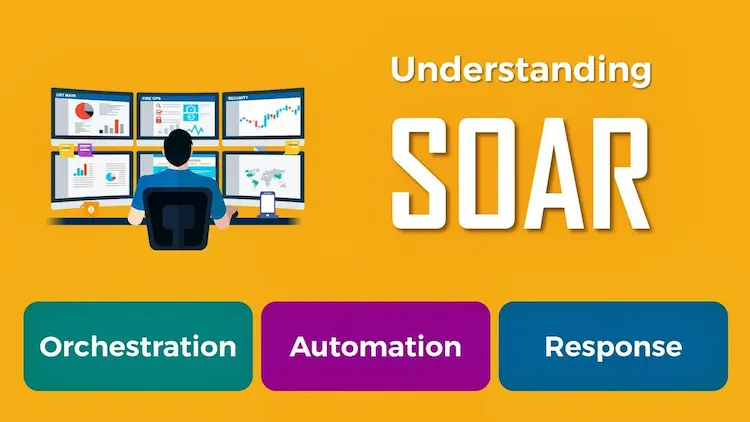In today’s digital age, where technology is omnipresent and interconnectedness is the norm, the need for robust cybersecurity measures has never been more critical.
With cyber threats evolving rapidly in sophistication and frequency, organizations must adapt their defense strategies to keep pace. One such strategy gaining prominence is Security Orchestration, Automation, and Response (SOAR).
This article explore basics of cyber resilience, explore the concept of SOAR, and discuss how embracing it can fortify defense mechanisms in the face of cyber threats.
Understanding Cyber Resilience

Cyber resilience refers to an organization’s ability to anticipate, withstand, and recover from cyber attacks. It goes beyond traditional cybersecurity approaches that focus solely on prevention and detection.
While prevention and detection remain vital components of cyber defense, cyber resilience acknowledges that breaches are inevitable and emphasizes the importance of effective response and recovery mechanisms.
A cyber-resilient organization understands its assets, identifies potential threats, and implements measures to mitigate risks. Moreover, it prioritizes continuous monitoring, timely incident response, and rapid recovery to minimize the impact of security incidents.
By adopting a proactive and holistic approach, organizations can better safeguard their digital infrastructure and minimize disruptions to operations.
Introducing SOAR
SOAR represents a paradigm shift in cybersecurity operations, combining three key elements: security orchestration, automation, and response.

Let’s break down these components:
- Security Orchestration: This involves the coordination and integration of security tools, processes, and personnel to streamline incident response workflows. Orchestration ensures that various security systems work together seamlessly, enabling faster and more effective threat detection and response.
- Automation: Automation plays a crucial role in reducing the manual effort required to handle security incidents. By automating routine tasks such as data collection, analysis, and remediation, organizations can accelerate response times and free up human resources to focus on more complex challenges. Delving into the integration of AI and SOAR can further revolutionize these automation processes, enabling even more sophisticated analysis and proactive cybersecurity measures.
- Response: A well-defined response framework ensures that security incidents are addressed promptly and efficiently. SOAR platforms facilitate the orchestration of response actions, allowing organizations to contain threats, mitigate damage, and restore normal operations swiftly.
Benefits of Embracing SOAR
The adoption of SOAR offers several significant benefits for organizations seeking to enhance their cyber resilience:
- Efficiency: By automating repetitive tasks and orchestrating security workflows, SOAR reduces the time and effort required to manage security incidents. This efficiency gains allows organizations to respond to threats more promptly and effectively.
- Scalability: SOAR platforms are designed to scale alongside growing security needs. Whether dealing with a few isolated incidents or a widespread cyber attack, organizations can leverage automation and orchestration to maintain a consistent level of defense across their entire infrastructure.
- Visibility and Control: SOAR provides greater visibility into security events and incident response activities. Through centralized dashboards and reporting tools, organizations can monitor the status of ongoing incidents, track response metrics, and identify areas for improvement.
- Adaptability: Cyber threats are constantly evolving, requiring organizations to adapt their defense strategies accordingly. SOAR platforms offer flexibility and customization options, allowing organizations to tailor their response workflows to specific threats and changing threat landscapes.
- Enhanced Collaboration: SOAR promotes collaboration among security teams, IT personnel, and other stakeholders involved in incident response. By providing a centralized platform for communication and coordination, SOAR facilitates smoother collaboration and knowledge sharing, leading to more effective outcomes.
Challenges and Considerations

While SOAR holds immense promise for bolstering cyber resilience, its adoption is not without challenges. Organizations must consider the following factors:
- Integration Complexity: Integrating disparate security tools and systems into a cohesive SOAR framework can be complex and time-consuming. Organizations must carefully assess their existing infrastructure and ensure compatibility with SOAR platforms.
- Skill Requirements: Effective implementation of SOAR requires expertise in security operations, automation technologies, and incident response processes. Organizations may need to invest in training and development initiatives to build the necessary skills within their teams.
- Risk of Over-Reliance:While automation can streamline security operations, organizations must guard against over-reliance on technology. Human oversight remains essential for complex decision-making and adapting to unforeseen circumstances.
- Compliance and Privacy Concerns: Organizations must ensure that their use of SOAR complies with relevant regulations and privacy requirements. The automated processing of sensitive data raises concerns around data privacy, consent, and compliance with data protection laws.
Conclusion
In an increasingly interconnected and threat-laden digital landscape, cyber resilience is paramount for organizations seeking to safeguard their assets and maintain operational continuity.
By embracing SOAR, organizations can bolster their defense mechanisms, improve response capabilities, and adapt more effectively to evolving cyber threats.
While challenges exist, the benefits of SOAR – efficiency, scalability, visibility, adaptability, and collaboration – make it a compelling investment for organizations committed to enhancing their cyber resilience in the face of an ever-changing threat landscape.